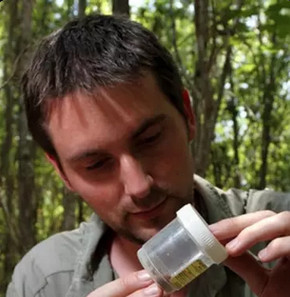



Alain Lenoir Mis à jour 06-Jui-2023
Professeur associé, Insect Biodiversity and Biogeography Laboratory, School of Biological Sciences, University of Hong Kong depuis 2014, titulaire en 2020. A créé en 2024 le premier musée de la biodiversité de Hong Kong.
Parcours. Né en 1981.
Université Catholique De L'ouest - Angers 1999 - 2002
Université Du Québec à Montréal (Uqam) - Montréal
2002 - 2006
NORTH CAROLINA STATE UNIVERSITY - Raleigh 2006 - 2011
Okinawa Institute Of Sciences And Technology - Enseignant (Biologie) - Naha
2012 - 2014
We are a group of ecologists interested in various aspects of the diversity of life. Our research seeks to answer the following questions. Where are the most species-rich regions of the world? How can some regions sustain thousands of species while others have only a few dozen? Were today’s most diverse regions as diverse 10, 50, or 100 million years ago? Do different groups of organisms follow the same diversity patterns? What effects have human changes on species richness and composition?
C'est l'un des animateurs du Global Ant Biodiversity Informatics. The Global Ant Biodiversity Informatics (GABI) project aims to compile 250 years of ant research into a single database providing distribution information for all ant species. With this project we hope to offer new opportunities to address questions in macroecology, macroevolution and biogeography of Formicidae as well as provide new insights for the use of distribution data for ant taxonomy, species inventories and conservation. At this time, records from > 8800 publications and 25 pre-existing databases have been compiled for a total of > 1.7 M records. Visualization of data is available from antmaps.org
Distribution
des fourmis en région paléarctique.
Un énorme travail de synthèse. La France divisée en plusieur
zones (Wang et al 2022).
- Wang, R., J. M. Kass, C. Galkowski, F. Garcia, M. T. Hamer,
A. Radchenko, S. Salata, E. Schifani, Z. M. Yusupov, E. P. Economo and B.
Guénard (2022). New distribution data and phylogenetic approach
reveal bioregionalization of the western Palearctic ants. bioRxiv: 2022.2003.2010.483749.
doi: 10.1101/2022.03.10.483749.
Combien
y a-t-il de fourmis sur terre ?
Tous les médias parlent
de cette publication. 20 millions de milliards (quadrilions) de fourmis à
partir de près de 500 publications. Voir vidéo sur Youtube.
- Schultheiss, P., S. S. Nooten, R. Wang, M. K. L. Wong,
F. Brassard and B. Guénard (2022). The abundance, biomass,
and distribution of ants on Earth. Proceedings of the National Academy of Sciences
119(40): e2201550119. doi: doi:10.1073/pnas.2201550119.
- Où y a t-il le plus de fourmis à découvrir ?
- Les espèces invasives de fourmis mettent en péril les écosystèmes du monde entier. De Rebecca Dzombak (National Geographic, 25 janvier 2023)
- Rencontre avec l’homme-fourmi de Hong Kong, 4 juin 2023.
Réf
- Kass, J. M., B. Guénard, K. L. Dudley, C. N. Jenkins,
F. Azuma, B. L. Fisher, C. L. Parr, H. Gibb, J. T. Longino, P. S. Ward, A. Chao,
D. Lubertazzi, M. Weiser, W. Jetz, R. Guralnick, R.
Blatrix, J. D. Lauriers, D. A. Donoso, C. Georgiadis, K. Gomez, P. G. Hawkes,
R. A. Johnson, J. E. Lattke, J. A. MacGown, W. Mackay, S. Robson, N. J. Sanders,
R. R. Dunn and E. P. Economo (2022). The global distribution of known and undiscovered
ant biodiversity. Science Advances 8(31): eabp9908. doi: doi:10.1126/sciadv.abp9908.
- Interviews
- The first high-resolution global map of ant biodiversity and estimates of
where future sampling could yield undiscovered species, by Myrmecological
News Blog 21 September 2022 .